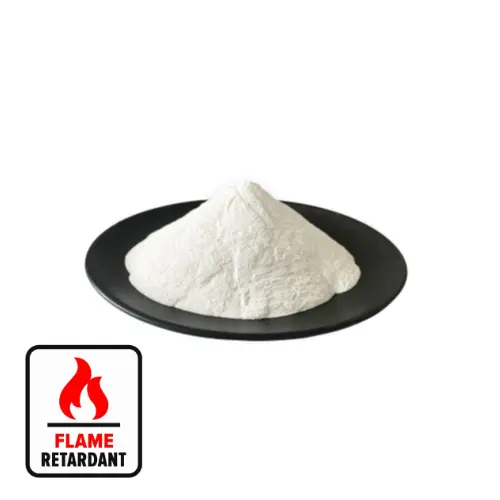Hebei Messi Biology Co., Ltd. stated that the main varieties of inorganic flame retardants are magnesium hydroxide, aluminum hydroxide, tin oxide, antimony oxide, molybdenum oxide, red phosphorus, zinc borate, ammonium molybdate, etc. Among them, magnesium hydroxide and aluminum hydroxide absorb a large amount of heat during decomposition, and the water generated can isolate the air. The oxides generated after decomposition are high-temperature resistant substances. Therefore, magnesium hydroxide and aluminum hydroxide can not only play a flame retardant role, but also a filling role. They have the characteristics of not producing corrosive halogen and harmful gases, no smoke, no toxicity, no dripping, no volatility, and long-lasting effect.

At present, the domestic consumption of aluminum hydroxide is relatively large, but with the increase of polymer processing temperature, aluminum hydroxide is prone to decomposition, reducing the flame retardant effect. Therefore, magnesium hydroxide is gradually replacing aluminum hydroxide. Compared with aluminum hydroxide, magnesium hydroxide has the following advantages:
The decomposition temperature of magnesium hydroxide is 100℃ higher than that of aluminum hydroxide, reaching 330℃, which is more helpful to increase the processing temperature of plastics, speed up extrusion speed, and shorten molding time; magnesium hydroxide has high decomposition energy, which helps to absorb combustion heat and improve flame retardant efficiency; magnesium hydroxide has strong neutralization ability with acid, and can quickly neutralize acidic gases such as CO2, SO2, and NOX generated by plastics during combustion;
When magnesium hydroxide is heated at 340℃-490℃, it will decompose and absorb heat from the surface of the burning object, thereby playing a flame retardant role. At the same time, it will release a large amount of water to dilute the oxygen on the surface of the burning object, and the active magnesium oxide generated by the decomposition will adhere to the surface of the combustible material, further preventing the combustion from proceeding.
Secondly, magnesium hydroxide not only does not produce any harmful substances during the entire flame retardant process, but the decomposition products of magnesium hydroxide can also absorb a large amount of smoke and harmful gases produced by the combustion of polymers such as plastics and rubber while having a flame retardant effect. Active magnesium oxide can continuously absorb incompletely burned molten residues, thereby quickly stopping the combustion, eliminating smoke and preventing molten droplets. It is an emerging environmentally friendly inorganic flame retardant.
